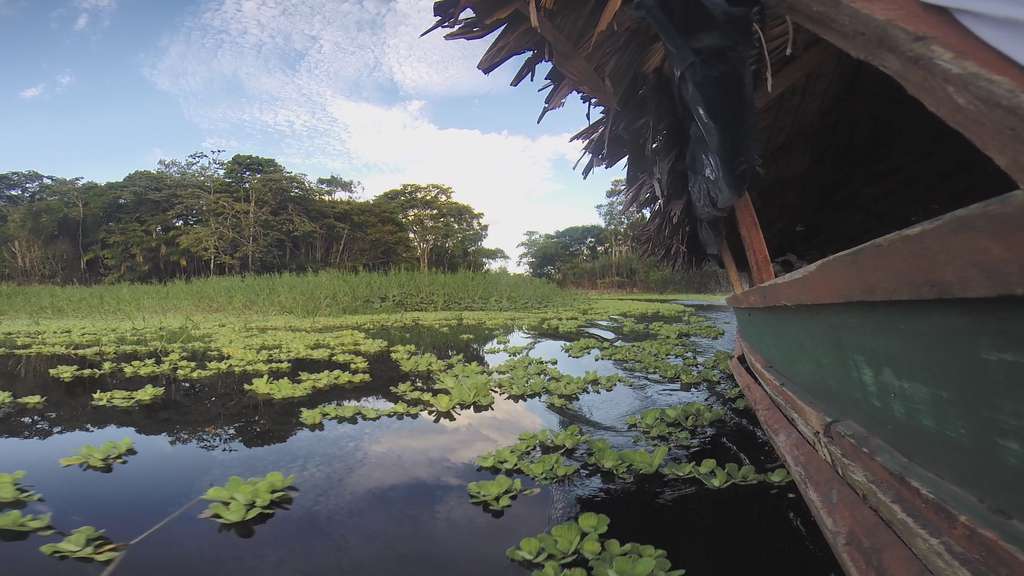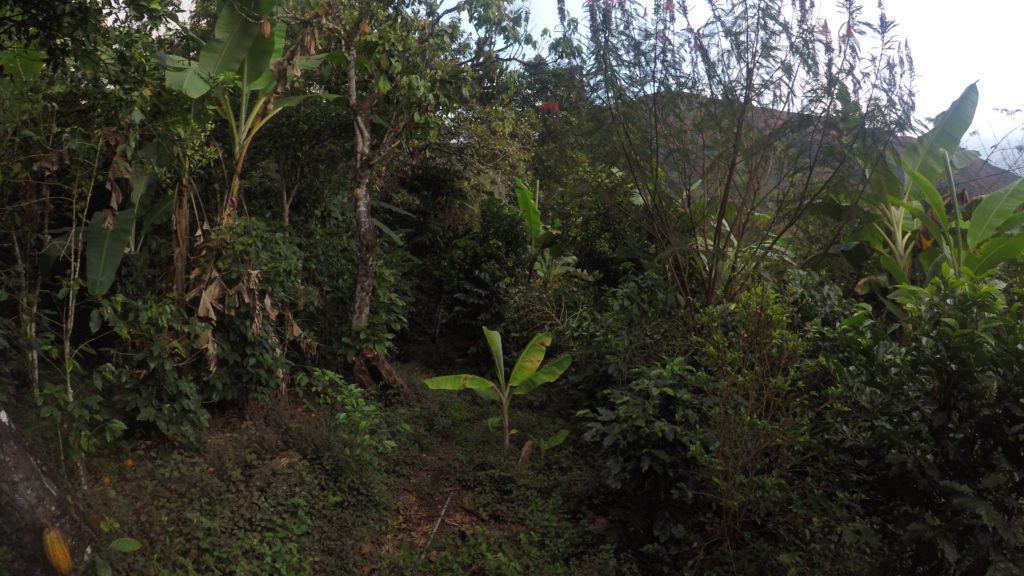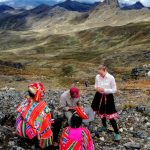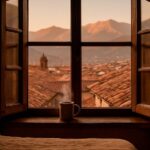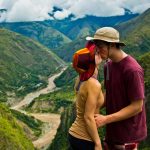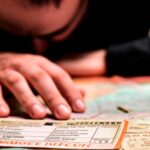In Peru there are many attractions in the jungle worth visiting. The options vary from the north of the country, near the border with Brazil, or in the center of Peru a few hours from Cusco. In this post we will tell you about the types of jungles that exist in Peru, the biodiversity of each area, and which are the best areas to explore
If you visit Cusco, a few hours away there is the opportunity to live adventurously in the jungle. We will tell you how to get there and what there is to do.
The first thing to clarify is that Peru has many diverse types of jungles. They are divided into geographic regions: there is the amazon jungle (or the low jungle), the high jungle, and the Madre de Dios jungle (mother of Gods). Each type of jungle is very different from the other, varying in characteristics, climate, latitudes, and specific biodiversity.
An adventure in the Peruvian jungle is not only an encounter with a profound amount wildlife and nature, but depending on the place you choose to visit, it might have many tourist alternatives for historical and cultural tourism, adventure tourism, eco tourism, and food tourism. Peru has options for every type of traveler.
Videos in the Peruvian Jungle
The Types of Jungles in Peru
Madre de Dios
This is a region that is entirely wild, sharing a border with Brasil, and in the region of Cusco. The Madre de Dios has many national parks and natural reserves, in which you can experience exciting adventures. The most important tourist attractions in this area are the Parque Nacional Manu, the Tambopata nacional reserve, and Sandoval Lake.
The Madre de Dios is a region rich in forests through which many rivers flow. It also flauts an enormous biodiversity of flora and fauna. It has a complex geography, so there are not many roads by land. There are areas which can only be reached by boats on the river (it is the same in Iquitos).
Madre de Dios has a warm, tropical, and humid climate. The average annual temperature is 26º celsius (79º fahrenheit), with a high of 38º celsius (100.4º fahrenheit). The time of year with the most rain is from December to March, during this time the rainfall can reach up to 1,000 millimeters (39 inches). That is why we advise you travel from May to October.
Depending on the area that you choose to visit in Madre de Dios there are many different options for activities. We can guarantee that throughout your time in Madre de Dios you will be immersed in nature. You can ride small barges down the rivers, bird watch, fish, go camping (or sleep in cabins if you prefer) and trek among the thick vegetation of this area.
Parque Nacional Manu
In Manu you can experience many varied types of tourism. In this zone lives more than 30 native communties where Quechua is there mother tongue. These communities have conserved antique traditions and customs. This region is also inhabited by native Amazonian populations that live in the villages: Matsiguenka, Amahuaca, Yine, Amarakaeri, Huashipaire, and Nahua. There are also communities that are called ¨no contactados¨ (uncontacted) because they hace chosen to live in isolation from the outside world.
One of the most beautiful attractions in this area are the collpas, as the locals call them (macaws), and other species of animals. In Manu there lives around 221 species of mammal. There are the jaguar, the black tiger, tapirs, wild boar, capybara, deer, and the black spider monkey, among others. There are also many types of birds that stand out, from the jabiru stork, the roseate spoonbill, harpey eagles, Orinoco goose, and the red cock of the Peruvian rock. In the park there is an extensive elevated path that has a platforms through which to observe the birds and the endless forest, while still preserving the natural habitat.
Tambopata and Lake Sandoval
This reserve is very close to Puerto Maldonado, on the border with Brazil. To go to Tambopata, first take a bus to the port, and then travel through the basin of the Madre de Dios River (you can also go by the Tambopata River) to finally enter the reserve. There reserve contains 270 thousand hectares (over 667,000 acres).
Inside the reserve is Lago Sandoval. The lake creates a huge mirror of water that is 127 hectares (313 acres) in size. It is traveled by boats that are rented to the residents. You can walk around the lake without entering Tambopata.
The Amazon or the Low Jungle
In Peru there is the grand tropical forest of South America, the Amazon. It extends for 782,800 square kilometers (486,409 miles), from the eastern limits of the Andes mountain range to the borders with Ecuador, Colombia, Brazil and Bolivia in the Amazonian plain.
One of the reasons that the Amazon is unique, is that it is one of the most biodiverse areas on the planet. At the same time, this area is not densely populated by humans. Although the population density here is the lowest in the whole country, it is also the most anthropologically diverse since the vast majority of ethnic groups in the country settled in this area. The Amazon is where the majority of the indigenous languages of Peru are spoken.
The Amazon is a very important region in Peru, and is practically more than half of the country. According to data from the Research Institute of the Peruvian Amazon (IIAP), 782,880.55 km² of Peruvian territory are biogeographically Amazonian, which represents 13.05% of the continental total. Peru is the second largest Amazonic national territory, after Brazil. The Amazon basin, which rises on the summits of the Andes mountains, occupies a much larger area of 967,922.47 km², or 16.13% of the total basin.
La Selva Baja (The low jungle),is also known by the names of the”Omagua region”, “Amazon rainforest” or “Amazonian plain”. It is the largest in the country, the altitude of this region is between 80 to 800 meters above sea level.
The climate is tropical but is also very rainy. The average temperature is around 28º celsius (82.4º fahrenheit), and the humidity is very high (more than 75%). These conditions can be very hard on your body. The soils in this region are heterogeneous as a result of constant rainfall, high temperatures and river deposits. Among the most famous rivers are the Amazon, Ucayali, Marañón, Putumayo, Yavarí, Napo, Tigre and Pastaza.
The most biological diversity on the planet can be found in the wild Amazon jungle of Peru. The variety of species is so great that it is estimated that most of them remain uncovered or studied.
Peru is the second country, after Colombia (including the extracontinental territory of the Caribbean islands: Providencia and San Andrés) with the largest number of bird species in the world and the third in terms of mammals, of which 44% and 63%. Respectively live in the Peruvian Amazon.
Attractions in the Amazon
The first stop, which can’t be missed, is Iquitos, a city-island which can’t be reached by land. You can only arrive by plane or boat (from Pucallpa, it is a 7 day trip on the water). From Iquitos you can take barges to Brazil, Ecuador, and Columbia.
In Iquitos you can sample many different types of exotic cuisines. For example: the Suri, which is a which is a cluster of small grilled worms and served on a plate or on skewers. Among the places you must visit is the Mercado de las Flores, where exotic products and ingredients of the jungle are sold. You can also stroll along the boardwalk and enjoy the nightlife with your new tasty treats.
Pacaya Samiria Reserve
If you want to leave the city and move further into the jungle, the best option is the Pacaya Samiria reserve. It is one of the largest reserves in Peru. Its territory (more than 2 million hectares) represents, for example, half of Holland or Switzerland. It’s limits are defined by the Marañón and Ucayali rivers. This important territory can be walked through on winding paths and navigated by small barges through rivers and lakes. In the darkness of the night you traverse the night walks and can hear the sounds of the jungle under the light of the moon.
Pacaya Samiria was created with the objective of conserving and studying the local flora and fauna. For this reason the area is built with minimal impact from visitors in mind. During the days you can explore the jungle areas, that are rich with exotic animal species such as macaws and sloths. Deeper in the jungle there are anacondas, reptiles, pink dolphins, monkeys, dozens of species of birds, fish, and hundreds of insects. It is amazing to be able to experience these animals in their natural environment.
The High Peruvian Jungle
La Selva Alta, also called Rupa-Rupa, ceja de selva (jungle brow), yunga or high altitude rainforest is an ecorregión of rainy, mountainous, clouded forest that extends from the eastern limits of the Peruvian Andes. It is 800 to 3,800 meters above sea level, so the weather is varied throughout. Its temperatures are warm in the lower parts and warm in the higher parts. The fauna is mainly of Amazonian origin with many endemisms (living things that only inhabit this place, but not in any other part of the world).
Taapoto, La Merced, Villa Rica, Pozuzo, Tingo Maria, Moyobambam and Chachapoyas, stand out as the most interesting tourist attractions to visit in the high jungle. In this area you can learn how some of the best coffee in the world is produced. You can also learn how German and Austrian settlers came to create villages here. You can walk to one of the most impressive waterfalls in the world, Gocta, and discover the ruins of Keulap.
There is a lot to experience in the high jungle and many unique options for tourism. In our article: Biodiversity in the High Jungle of Peru can you find all of the information, routes, and recommendations you will need to travel in this amazing area.
The Best Tours in the Peruvian Jungle
There is a tour thatwe provide that will take you to explore the best of the jungle near Cusco city. It is a 7 day tour where you first start in the city, and all of it’s comforts, and move torwards the jungle. This tour includes historical and archaeological attractions.
In the following days after Cusco you will travel through the most emblematic places of the Sacred Valley. From the mountains, to the edge of the jungle. Machu Picchu is a part of this tour in which you can enjoy not only historical-cultural tours but also adventure sports.
The Sonqo Jungle is a part of the Peruvian jungle with a rich culture, where you can practice adventure sports and experience a jungle not too far from the city.
There are many options, you just have to choose the alternative that you like the best. No matter which section of the jungle you decide to explore, it will not disappoint. We hope you have an unforgettable adventure.

